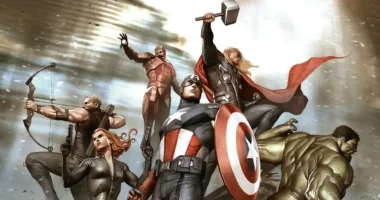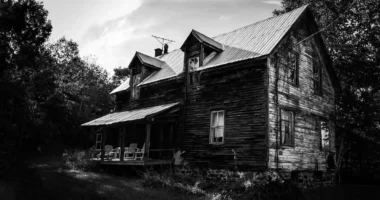5 World Building Tips For Your Novel: If you’ve decided to write “second world” fantasy, meaning your story isn’t set in a recognized version of our reality, then you’ll need to spend some time refining every part of your new fictitious setting, whether it’s a magical land inside a wardrobe or droids and lightsabers in space.
I mean, that seems thrilling, right? You are free to do whatever you want with your book as the worldbuilder and ultimate author, unrestricted by Earth Prime’s laws and logic. It is a chore that can, however, easily become too much to handle. Here are five guidelines that will help you get started on the right foot with worldbuilding and give it some structure.
5 World Building Tips For Your Novel
Use actual history as inspiration for the past of your world:
Even if you don’t include every detail in your novel, giving your fictional world a history that is equally as fascinating as our own will increase its richness and depth.
Using actual history as a starting point is a fantastic method to accomplish this
Famous fantasy settings like Middle-Earth and Westeros frequently have a medieval vibe, and this is no accident! To better create their worlds, Tolkien and Martin both drew influence from Europe’s rich historical past. Martin based his book’s main war on The War of the Roses, while Tolkien mixed the influence of classical civilizations with Anglo-Saxon history (fleshing it out with dragons and ice zombies, of course).
If you’re writing about a futuristic society, you should be aware of the developments that have a place in that society from the present to the period in which your novel is set. There will undoubtedly be some speculation involved in this, but it doesn’t mean you can’t still draw on the past. Perhaps the rapid development of robotics was caused by a virtual Cold War. Or did a nuclear accident like Chornobyl force the creation of new technology? Whatever the genre, a history informed by actual events will always feel more plausible.

Emphasize the diversity in your world by doing the following:
The “actual world” continues to be a source of inspiration for science fiction and fantasy writers when developing the cultures of their fictional worlds. Make sure to authentically and compassionately reflect any historical or contemporary culture you are adapting, whether it be Norse, Islamic, or Aboriginal.
Use current cultures as a starting point rather than doing a quick copy-and-paste job to avoid clichés and prejudices. To add some variation, try drawing inspiration from several sources! To get you thinking, consider introducing heterogeneity in the following ways:
Geography
Ask yourself if the many landscapes and climates of your world will have an impact on its various cultures. Consider Martin’s A Song of Ice and Fire: partly due to location, the inhabitants of the Kingdom of the North live and think substantially differently from those of King’s Landing.
Strength Dynamics
Consider how gender, class, or race may affect the experiences of various groups while creating the systems of governance, law-making, and law enforcement in your society. Women do significantly worse than males do overall in The Handmaid’s Tale, and they are also subject to a class structure that deprives single women of fundamental human rights.

Language
When sociological groupings produce their dialects, language evolution not only reflects societal change as a whole but also acts as a reflection of cultural variety. For instance, Hoban’s Riddley Walker is written in a dialect influenced by the Kentish regional accent, the awkward preteen slang of the narrator, and Hoban’s post-apocalyptic vernacular.
Create clear guidelines and limitations for your magic system:
Building your fictitious world probably allows you to develop a magic system or other game-changing technology without being constrained by the realities of the real world. However, magic and science require clear guidelines and limitations in our world and any other. Without them, the decisions made by your characters would have no repercussions, and your story would be non-existent! If something dreadful occurred, time could easily be turned backward; if your hero was in danger, they could flee “by magic”; and even if they didn’t, it wouldn’t matter because you could still bring the dead back to life!
Give your world a few unique characteristics:
You should be familiar with the general layout of your magic system in addition to adding specific nuances to make your world stand out. Working through every item’s magical characteristics is not necessary; authors who do so risk creating a universe that is chaotic and overly complex.
Finding the pertinent elements to focus on is what it means
Give your universe a few distinguishing characteristics that you could utilize to attract readers and sell your work. Take Harry Potter as an illustration. The Ministry of Magic, a governing entity founded on the “ground rule” that Muggles must not be aware of magic, is one of my favorite aspects of its world. Hogwarts students are required to take soul-crushing positions in magical middle management as part of a system for upholding magical law, but the intricacies are what make it come to life.

For instance, golden fireplaces that run up and down the walls are utilized by witches and wizards to enter and exit the atrium, and staff use flying memos to communicate with various departments (they had formerly used owls, but the mess was unbelievable). These transportation and communication-related specifics are important recurring themes in the Harry Potter universe. They maintain consistency while enhancing the magic.
Create a world that fits your story; I hope I’ve demonstrated how enjoyable it is to create a fictional world. Numerous authors of science fiction and fantasy even create key components of their worlds before deciding on a plot or plotline.
Be careful And Don’t let the environment overshadow the plot:
You risk changing the reality of your world’s rules to match your story if you don’t take the time to sketch your storyline before diving into the finer details of worldbuilding. This might result in contradictions and plot holes. Use the worldbuilding method to enhance your narrative and characters so that your story is engaging (and without plot holes). In this manner, a beautiful book can be created by combining location and narrative!
Also Read: Top 10 Artists from marvel comics



